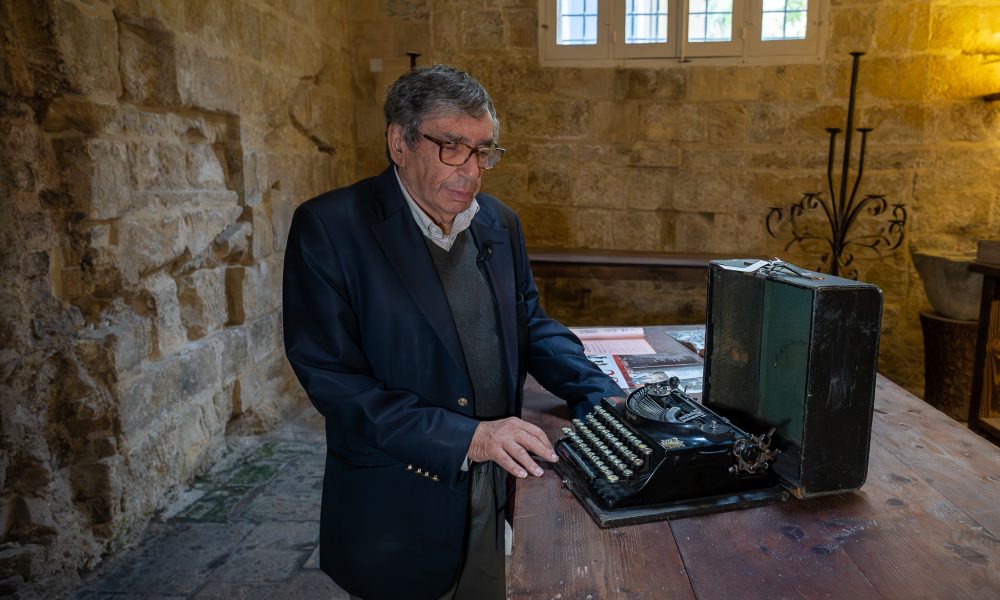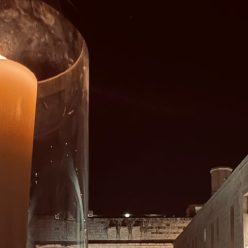By MariaElena Zammit and Warren Bugeja.
Several steps lead to a monumental portal into a lost Neolithic world. Except for these hefty megaliths and the artefacts they left behind, we do not know who built the awe-inspiring Stone Age complexes that dot the Maltese Islands. There are no written records of their thoughts, their beliefs or preoccupations. As to the use of these magnificent structures, all we can surmise is that they could only have been constructed with the cooperation of a highly organised community striving towards a common goal. What that goal was remains conjecture. Ta’ Ħaġrat Megalithic Site may have served different purposes, but it is unlikely that these structures were originally used for domestic use. The collective effort and time involved in their construction and their very monumentality seem to refute this theory. What can be ascertained, though, is that they were the focus of a community. “The way they were shaped is indicative of this as well,” MariaElena Zammit, Senior Curator for Prehistoric Sites (North), maintains. “The main doorway is set within a semi-circular facade, which creates a space outside the structure where people can group and gather to follow what was happening inside the building,” she explains. One of the reasons MariaElena has chosen Ta’ Ħaġrat’s doorway as her favourite artefact for Heritage Malta’s HM TV series ‘Treasure To Meet You’ is because “it is a constant reminder of the participation of the community in the care and management of these cultural sites.”

Ta’ Ħaġrat Megalithic Site was listed as a UNESCO World Heritage Site in 1992. Other Megalithic sites which are also inscribed by UNESCO include Skorba Prehistoric Site, Ħaġar Qim and Mnajdra Archaeological Park, Ħal Tarxien Prehistoric Complex, and Ġgantija Archaeological Park on the neighbouring island of Gozo. These structures start to be constructed around 3800 BC and were in use for hundreds of years.
Among the earliest groups of free-standing structures in the world, they are considered to be a milestone in humankind’s technological evolution. They display a distinct architectural tradition and a level of engineering and sophistication in their construction that does not appear to have been influenced by anything beyond Maltese shores. “Their in-depth knowledge of the natural resources they were working with is incredible,” MariaElena states enthusiastically.
Located on the eastern outskirts of the village of Mġarr and only about a kilometre away from Skorba Prehistoric Site, Ta’ Ħaġrat is constructed entirely from lower coralline limestone and consists of two trefoil structures with a concave façade opening onto a spacious semicircular forecourt. Smaller in size than the other megalithic complexes, Ta’ Ħaġrat more than makes up for its stature with its photogenic doorway. “The set of steps leading to the doorway is quite a rare feature. We don’t find many examples of this in the other megalithic sites; they give this doorway an aspect of monumentality,” MariaElena points out.
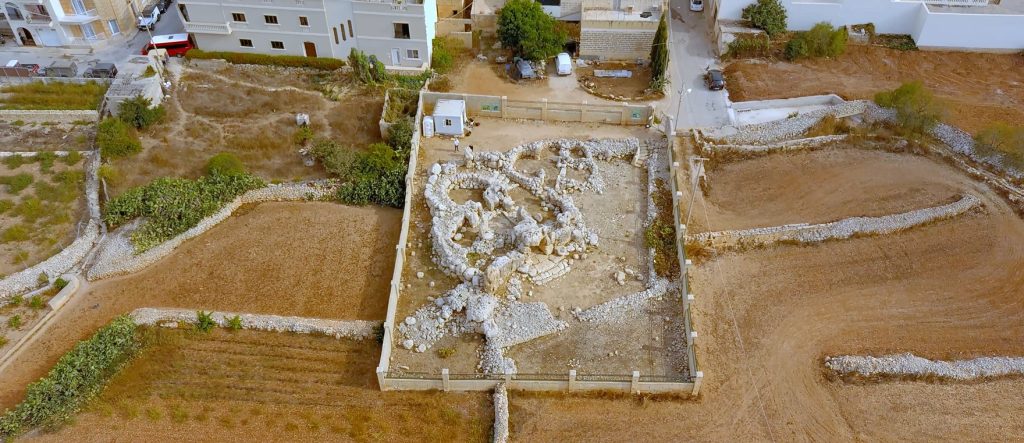
Ta’ Ħaġrat was first excavated between 1923 and 1926 by Sir Temi Zammit, then Director of the Museum. It was later excavated by John Davies Evans in 1953 and British archaeologist David H. Trump in 1961. One of the most intriguing artefacts to emerge from the excavations was a model of a Neolithic building with a trilithon doorway sculpted in globigerina limestone. Interestingly the model features upper layers of horizontal corbelling, lending credence to the theory that these structures were once roofed.
The site had already been important to the community of Mġarr, with its first excavations being supervised by Fr Edgar Salomone, the village chaplain and a significant figure in the history of the community. Sir Temi Zammit also employed men from the village to help with the dig. Initially, the newly built primary school of Mġarr served as a storage room for artefacts yielded by the site. After excavations were concluded, they were taken to the National Museum of Archaeology.
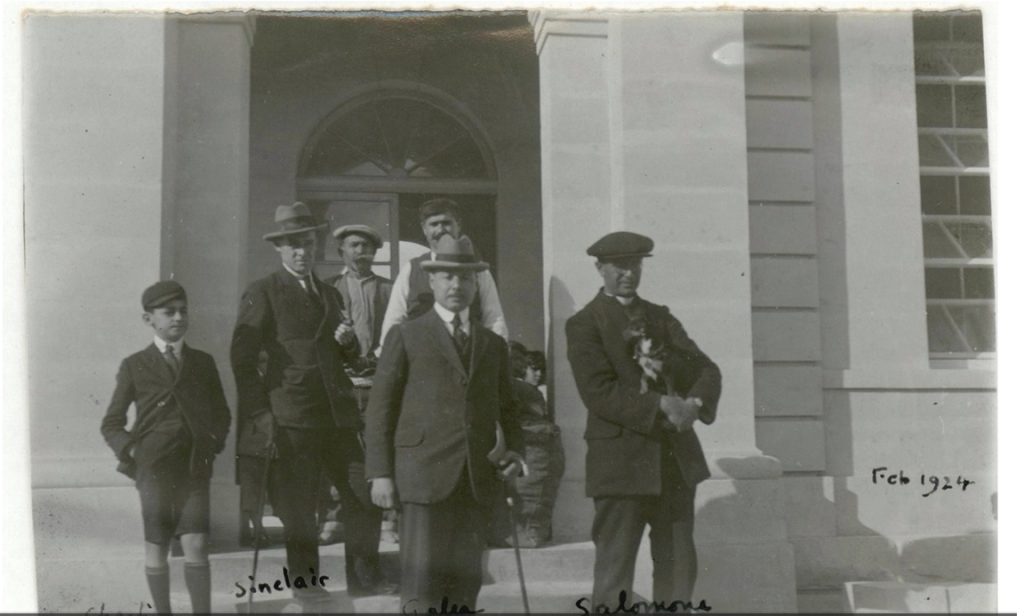
Before the site was discovered, the surrounding fields had been used for agricultural purposes. Carob trees, in particular, provided an essential crop for local farmers in the form of fodder for their animals. Unfortunately, the trees caused the horizontal elements in the doorway to topple over. In 1937 a contractor was found to reinstate the fallen lintel, and Carmelo Abela from Mġarr was tasked with filling the gaps in the vertical elements. The doorway’s restoration was a joyous community event. Members of the Mġarr elderly community recall being present as kids, and lemonade was distributed to them to mark the occasion, which was a big deal for them back then. The site remains close to the heart of local residents, so much so that the trilithon doorway figures prominently in the emblem of the Mġarr local council. Today, the Mġarr community continues to help manage the site by selling tickets to visitors from nearby cafes, shops and the Local Council.
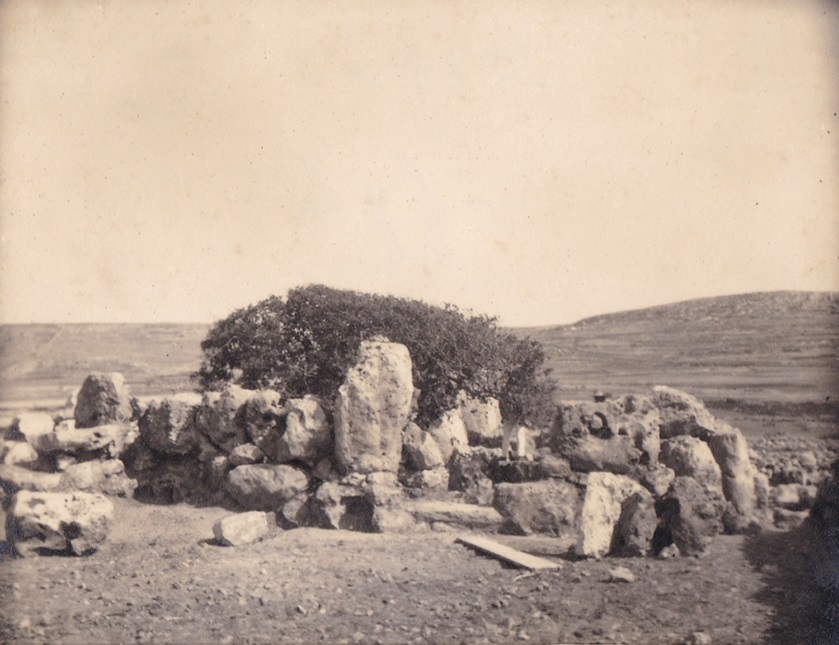
Created for a prehistoric community and cared for by a contemporary society, Ta’ Ħaġrat Megalithic Site has always been a point of reference for the residents of Mġarr. A constant fixture in the landscape from childhood, the site is valued as a totem of regional identity.
Why not make a trip up north to Mġarr and visit both Ta’ Ħaġrat Megalithic Site and Skorba Prehistoric Site. Find out more here: Ta’ Ħaġrat Megalithic Site and Skorba Prehisotric Site
Save money and purchase a combo ticket which allows access to both sites.
Watch MariaElena’s feature here in English or Maltese

‘Treasure to Meet You’ is uploaded to Heritage Malta’s Facebook page every fortnight on a Tuesday at 19:00. The intimate series consists of short features in both English and Maltese versions. Each fortnight, viewers get to meet one of our dedicated curators, who were asked to select an artefact or feature from the national collection to which they are particularly attached.
Latest News
Press Releases | 2nd October 2024
Maltese Shop Facades Under the Spotlight in TOPIA at MUŻA
Press Releases | 2nd October 2024
A Weekend of Wonder at Three Candlelit Heritage Malta Birgu Sites
6th September 2024
More Calls for Applications for the maltabiennale.art 2026
